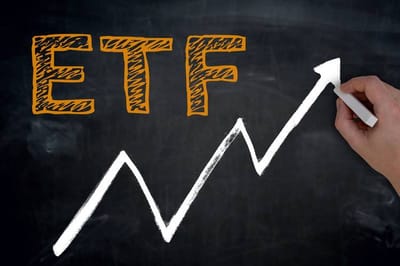Passive Exchange Traded Funds

First developed in the 1990s, Exchange Traded Funds (ETFs) provide a way to invest in a pool of securities usually focused at tracking a certain index (S&P500, NSDQ100, etc.) or industry (Mining Industry, Healthcare Industry, Travel Industry, etc.). Prior to the release of ETFs individual investors required significant capital and high fees to track these indices and industries, either via self management or mutual funds. Once introduced, ETFs opened the door to individual investors for a low cost, passive, way of investing in these assets.
With ETFs available to all, a boom in passive investment began, providing investors a way to diversify their portfolios with no need to manage the individual stock held within.
The benefits of passively investing via ETFs have been explained by a number of the great value investors So who better to explain it than the greatest of them all, Warren Buffet:
- "A low-cost index fund is the most sensible equity investment for the great majority of investors. My mentor, Ben Graham, took this position many years ago, and everything I have seen since convinces me of its truth."
- "When trillions of dollars are managed by Wall Streeters charging high fees, it will be the managers who reap outsized profits, not the clients. Both large and small investors should stick with low-cost index funds".
- "The 21st century will witness further gains, almost certain to be substantial. The goal of the non-professional should not be to pick winners - neither he nor his 'helpers' can do that - but should rather be to own a cross-section of businesses that in aggregate are bound to do well. A low-cost S&P500 index fund will achieve this goal."
What to look for
As explained by Warren Buffett we should simply look for a low-cost ETF that tracks the S&P500. The most popular being SPDR S&P 500 ETF Trust (SPY) with an expense ratio of 0.09% and Vanguard 500 Index Fund ETF (VOO) with an expense ratio of 0.03%.
There are however many more stocks and ETFs out there providing strong performance over the years such as the Vanguard Mid-Cap Index Fund ETF (VO) with an expense ratio 0.04% and the Vanguard Small-Cap Index Fund ETF (VB) with an expense ratio of 0.05%. Whilst these ETFs are hold a bit more volatility they do track a basket of Mid-Cap and Small-Cap companies, respectively. These ETFs therefore provide further diversification beyond the Large- and Mega-Cap companies found in the S&P500.
Forgetting the ETFs mentioned above, there is a multitude of choice for any investor to look for covering a number of indices and industries.
How does this fit into the AVI Strategy
Being the most passive part of the AVI Strategy the weighting of ETFs in the portfolio will depend on the number of Traditional Value Stocks held, typically range between 30% and 50% (but never less than 20%).
As the number/weighting of Traditional Value Stocks held rises and falls the weighting of ETFs in the portfolio will adjust to accommodate this change.
Whilst a single ETF is acceptable for this part of the AVI strategy (best choices being one that tracks the S&P500 as suggested by Warren Buffett) the choice is open to each investor.
Being an eToro Popular Investor I do not have access to the VOO ETF and therefore focus the majority of my ETF investments in SPY. There is no need to complicate things for yourself here.